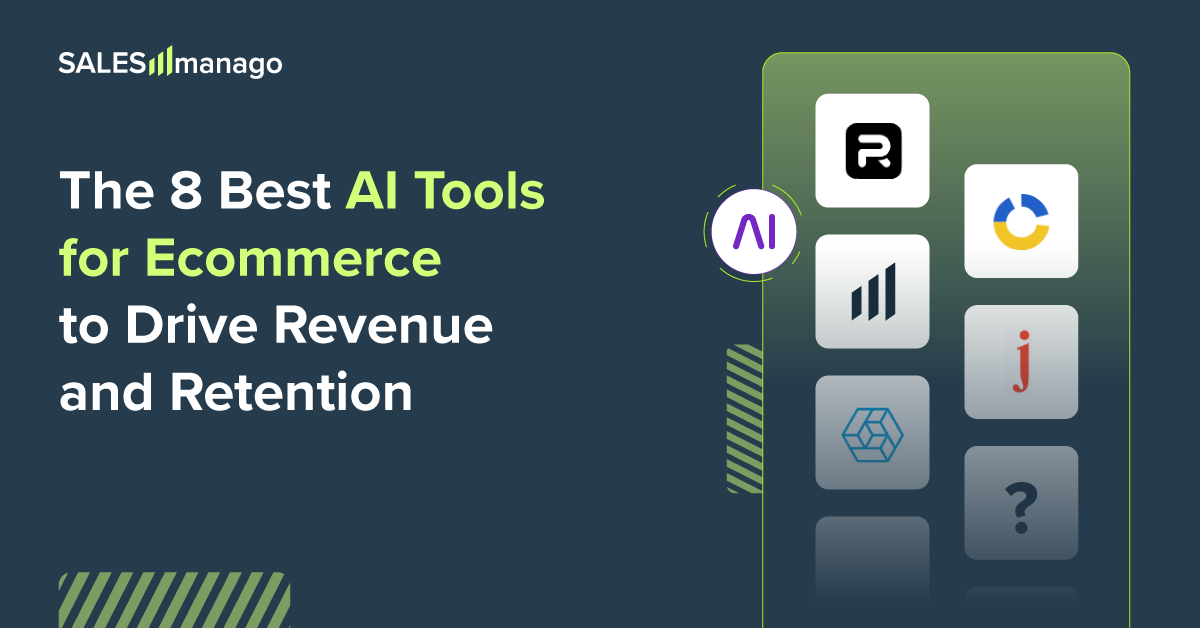
Walking into the world of AI tools for ecommerce feels a bit like being a kid in a sweet shop with unlimited pocket money. There are endless shiny options, from AI copywriters that promise perfect prose to chatbots that never sleep. But for a business leader, this excitement can quickly turn into a strategic headache.
Which tools actually move the needle on revenue and retention? And how do you build a cohesive strategy instead of just collecting a bag of expensive, sugary gadgets that don't work together?
This guide cuts through the noise. We've curated a list of the eight best AI tools—and the strategic thinking behind them—to help you make the smart investments that will truly fuel your growth in 2026.
Why AI is a Necessity, Not a Novelty, in Modern Ecommerce
For a while, AI in ecommerce felt like an exciting but optional upgrade—a bit like choosing the premium sound system in a new car. Today, it’s the engine. The market has fundamentally shifted, and businesses still running on manual power are finding themselves left behind, wondering why their old strategies no longer get them up to speed.
The End of "One-Size-Fits-All" Commerce
The simple truth is that your customers have been spoiled. They’ve been conditioned by the likes of Zalando and ASOS to expect a deeply personal experience, and this is now a non-negotiable expectation. The days of a single homepage or a generic email blast driving significant growth are over.
In a world of hyper-competition, where a rival is always just one click away, personalisation is your most defensible competitive advantage. But a human team, no matter how talented, simply cannot manually create and manage millions of individual customer journeys in real time. AI is the only technology capable of processing the vast ocean of customer data needed to deliver the 1-to-1 experiences that build loyalty and prevent brand switching.
The Data Deluge: Turning Information into Actionable Insight
Every ecommerce business today is sitting on a mountain of data: every click, every search, every purchase, every abandoned cart. For many, this data is more of a liability than an asset—a confusing digital landfill that is expensive to store and difficult to understand.
This is where AI provides its second critical function. It acts as the intelligent brain that can make sense of this chaos. AI doesn't just store data; it analyses it to uncover hidden patterns, predict future trends, and generate the actionable insights that a modern marketing strategy depends on. It can tell you not just what a customer bought, but what they are likely to want next, or which seemingly happy customers are silently at risk of churning. Without AI, you're just collecting information; with it, you're building intelligence.
Supercharging Your Marketers: How an AI Toolbox Changes the Game
For a marketing leader, the true value of AI isn't just in the technology itself, but in what it unlocks for your most valuable asset: your team. Integrating a rich set of AI tools fundamentally changes the nature of a marketer's work, transforming their role from operational to strategic and dramatically amplifying their impact.
From Manual Drudgery to Strategic Oversight
Think about the hours your talented team spends on repetitive, manual tasks: painstakingly building audience segments, writing dozens of minor variations of ad copy, or pulling data for weekly reports. While necessary, this is not high-value work. It’s the digital equivalent of digging ditches, and it keeps your best strategic thinkers bogged down in the operational trenches.
AI automates this drudgery. It can build complex predictive segments in minutes, generate a hundred different email subject lines for testing in seconds, and surface key insights from performance data automatically. This doesn't replace your marketers; it liberates them. It frees up their time and intellectual energy to focus on what humans do best: understanding the customer, developing creative strategy, and building the brand's story. You hired them for their brains, not their ability to click buttons, and a rich AI toolbox allows them to finally use them to their full potential.
Unlocking Hyper-Speed and Intelligence
In today's fast-moving market, the team that can test, learn, and iterate the fastest is the team that wins. An AI toolbox acts as a powerful strategic partner, massively accelerating this cycle and allowing your team to operate at a level of speed and intelligence that would be impossible to achieve manually. Instead of relying on historical data and educated guesses, your team can leverage AI to make smarter decisions, faster.
For example, AI can identify hidden opportunities by creating predictive segments of "customers likely to make their second purchase" or "VIPs at risk of churning," allowing you to launch proactive campaigns to capture revenue or prevent loss before it happens. This intelligence extends to every interaction through next-best-action models, where the AI determines the single best message or offer to show any given customer at any given moment. It takes the guesswork out of personalisation and allows your team to run thousands of experiments at once, automatically identifying winning combinations and reallocating budget in real time. This transforms your marketing from a series of slow, deliberate campaigns into a rapid, continuous optimisation engine.
The 8 Best AI Tools for Ecommerce in 2026
The market for AI ecommerce tools is deafeningly loud. Every week, a new solution appears, promising to revolutionise your marketing and double your revenue. For a business leader, the real challenge isn't a lack of options; it's the strategic paralysis that comes from having too many. To cut through the noise, we’ve curated this list not by hype, but by strategic impact.
1. Jasper
Jasper is best understood as an AI content platform that becomes a central part of your marketing team's workflow. You can teach it your company's specific brand voice, product details, and marketing style, creating a "brand brain" that ensures any content it helps create is consistently on-brand. It's designed for collaboration, allowing your team to brainstorm and develop entire campaigns—from the initial brief to the final ad copy and blog posts—all within a single environment. It's a strategic partner for accelerating the entire content lifecycle, not just a tool for overcoming writer's block.
Best for: Marketing teams that need to scale their content production across multiple channels while maintaining a consistent and distinct brand voice.
Best use for eCommerce: Developing entire marketing campaigns from a single brief, generating unique and SEO-optimised product descriptions for your whole catalogue, and creating cohesive ad copy across different platforms like Google and Meta.
Basic Price: Starts at $39/mo.
Alternative tool: Copy.ai
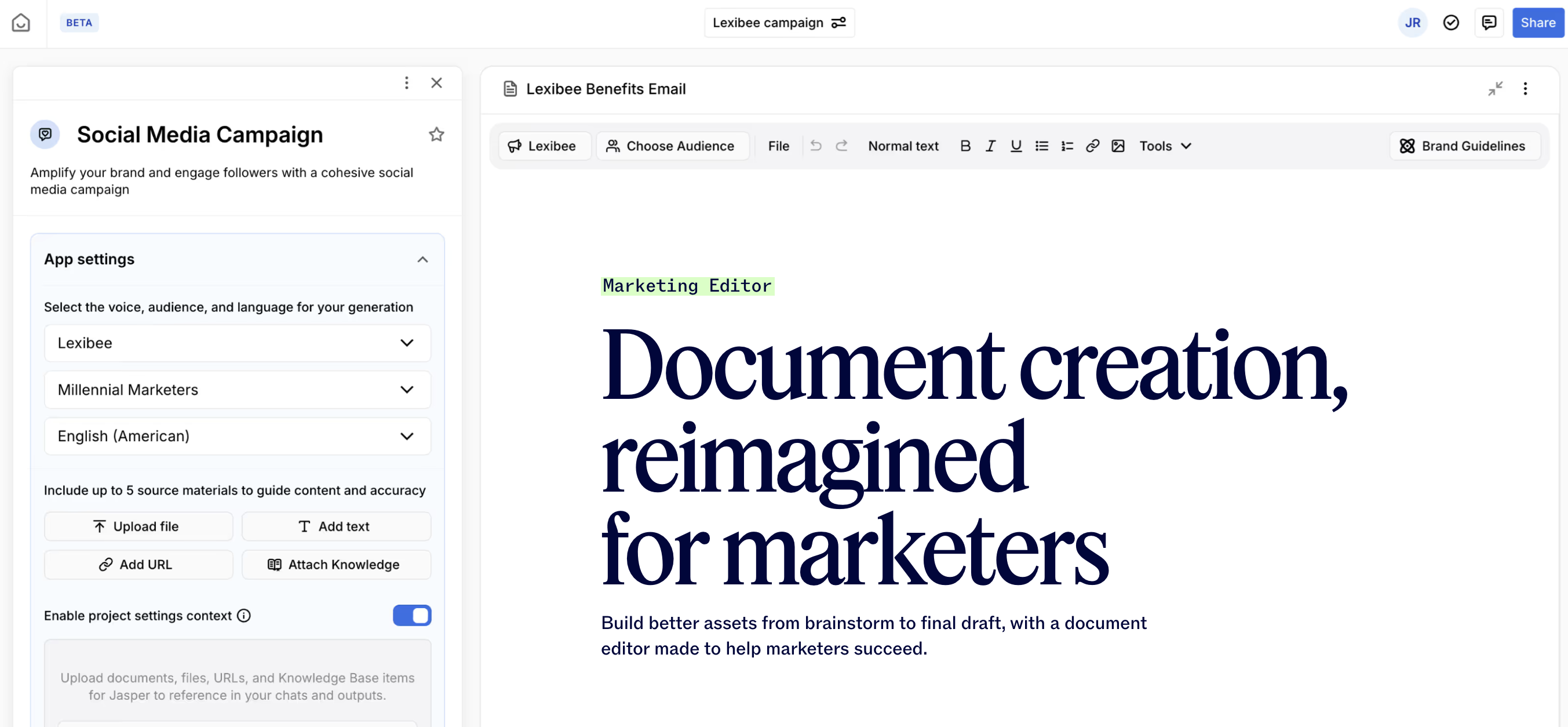
2. Algolia
Algolia is an AI engine that replaces the often slow and inaccurate default search bar on your ecommerce site. It transforms your on-site search from a frustrating guessing game into an intelligent and intuitive discovery experience. The AI is smart enough to understand what customers mean, not just what they type, handling typos and synonyms effortlessly. It delivers relevant results instantly, preventing the "zero results found" dead-end that causes so many potential customers to abandon a site.
Best for: Ecommerce businesses with medium-to-large product catalogues where fast and accurate product discovery is critical for conversion.
Best use for eCommerce: Powering the main search bar to provide an exceptional user experience, creating dynamic category pages that filter results instantly, and enabling personalised search results that re-rank products based on an individual's browsing history and preferences.
Basic Price: The Starter plan costs 49$/mo.
Alternative tool: Searchspring
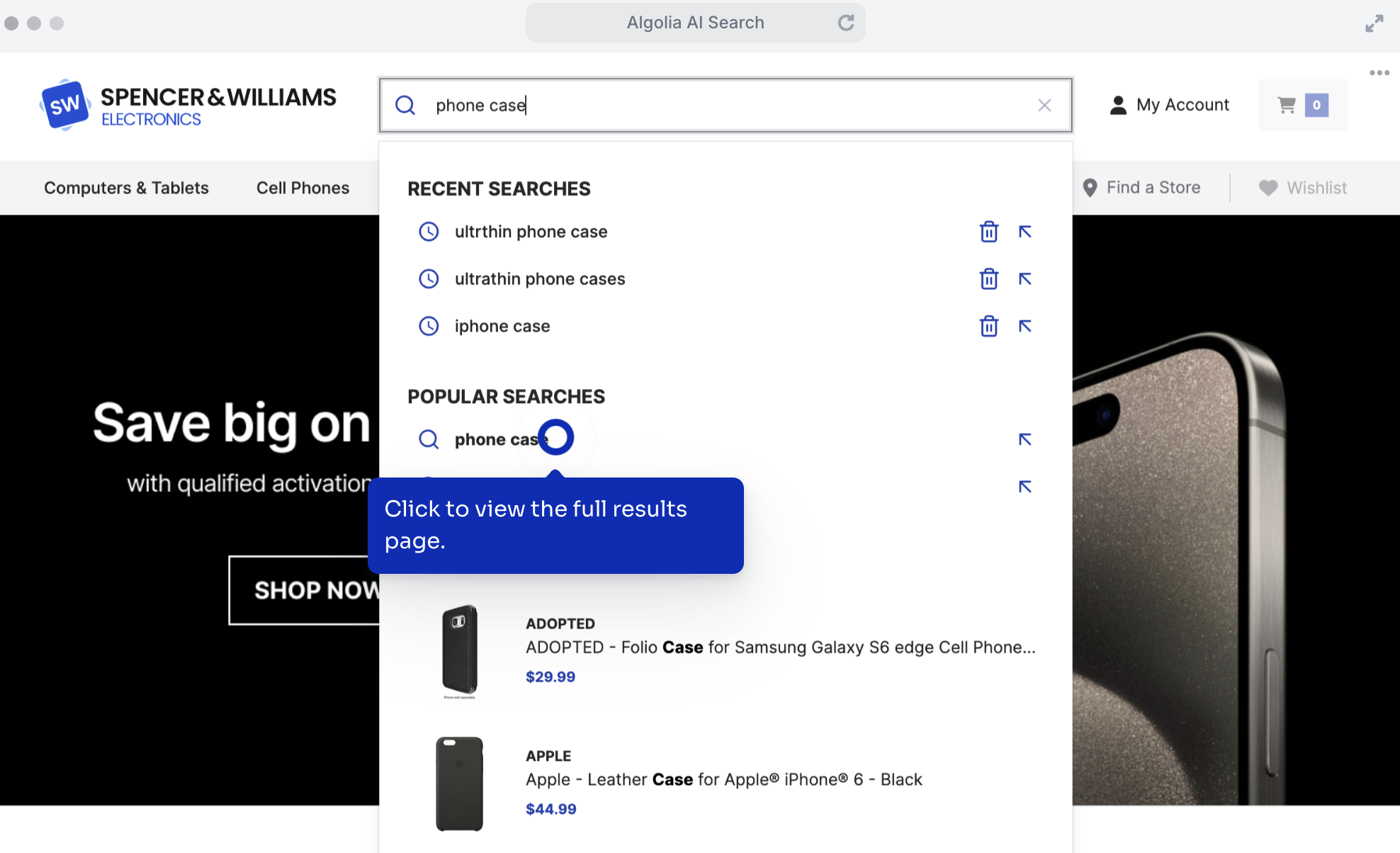
3. Loop Returns
Loop is a platform that transforms the entire post-purchase experience, specifically how customers handle returns. Instead of treating returns as a costly problem, Loop turns them into an opportunity. From a customer's point of view, it provides a simple, self-service online portal where they can initiate a return or exchange without needing to contact customer support. The AI-driven system is designed to proactively suggest exchanges or offer store credit before defaulting to a cash refund, helping to retain revenue that would otherwise be lost.
Best for: Brands, particularly on Shopify, that want to reduce the financial impact of returns and improve the post-purchase customer experience.
Best use for eCommerce: Providing a seamless, Amazon-like returns portal, automatically encouraging customers to exchange an item for a different size, colour, or even a completely different product, and gathering valuable data on why items are being returned to improve products and operations.
Basic Price: Essential plan starts at $155/mo.
Alternative tool: AfterShip

4. Photoroom
Photoroom is an AI-powered photo editor that massively simplifies the process of creating professional product images. For an ecommerce team, it solves the time-consuming problem of editing photos one by one. You can upload hundreds of product shots at once, and the AI will instantly remove the backgrounds, clean up any imperfections, and place the product in a new scene or on a clean, white background. It essentially gives your team an in-house photo studio without the complexity or cost of traditional software like Photoshop.
Best for: Ecommerce teams of any size that need to create high-quality, consistent product imagery quickly and affordably.
Best use for eCommerce: Batch-editing hundreds of raw product photos for catalogue consistency, creating professional lifestyle images by placing products in AI-generated scenes, and instantly generating assets for social media and marketing campaigns.
Basic Price: Photoroom offers a free plan with limited features. The "Pro" plan starts at $7.5/mo.
Alternative tool: Pixelcut

5. Competera
Competera is an AI-powered pricing platform that helps your business find the optimal price for every product in your catalogue. For an ecommerce manager, it solves the massive headache of manually tracking competitor prices and relying on guesswork for promotions. The platform's AI analyses not just your competitors' pricing but also market demand and your own business goals (like margin or revenue targets). It then recommends and can even automate price adjustments, ensuring you're not leaving money on the table or getting dragged into unprofitable price wars.
Best for: Mid-to-large scale retailers in competitive markets who need to manage pricing for thousands of SKUs.
Best use for eCommerce: Automating competitor price tracking, setting optimal prices to maximise profit margins, and getting AI-driven recommendations for promotions and markdowns.
Basic Price and the highest price: Competera offers custom pricing based on the scale of the business and the specific solutions required.
Alternative tool: Yieldigo
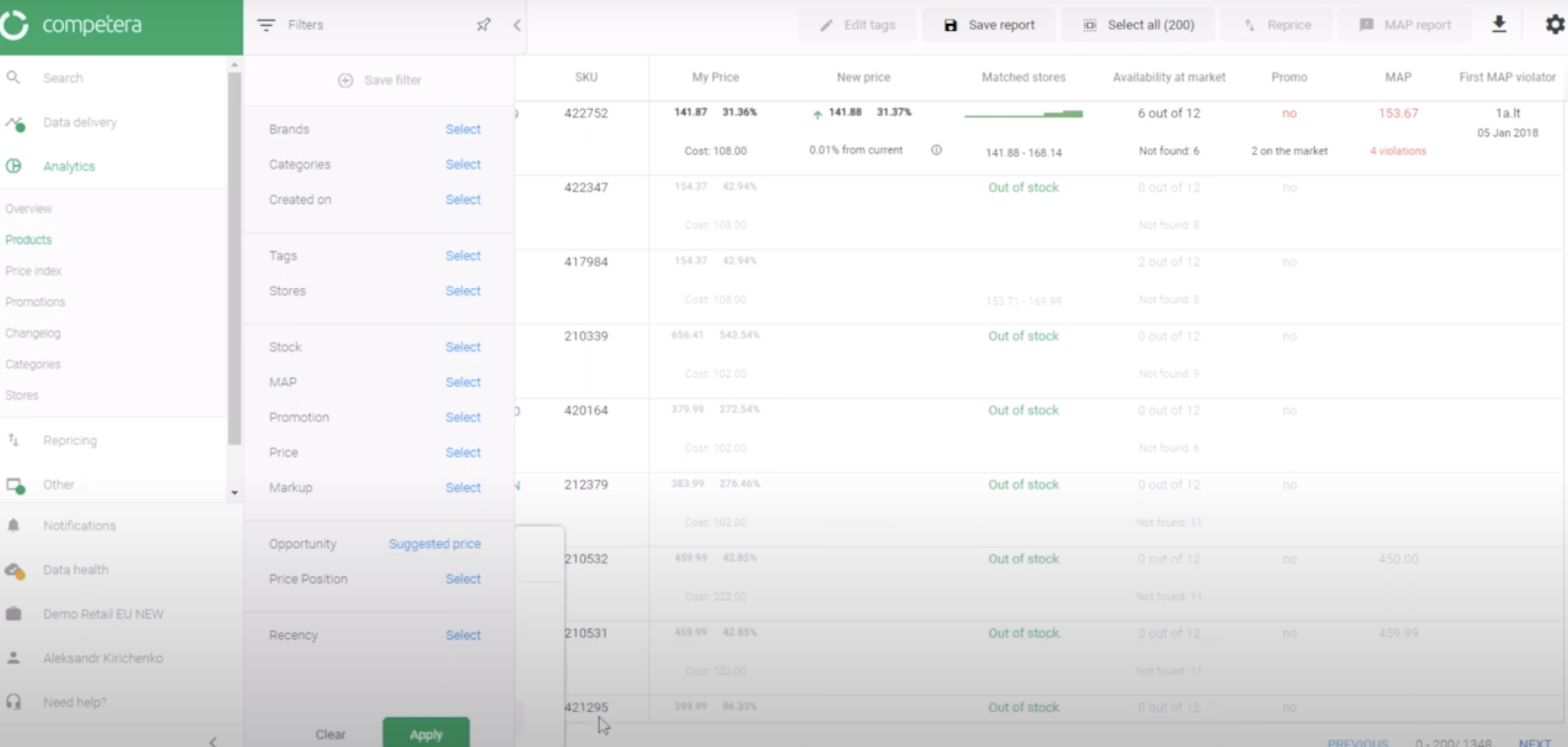
6. Plerdy
Plerdy is a conversion optimisation platform that helps an ecommerce manager understand user behaviour through visual tools like AI-powered heatmaps and session recordings. Its heatmaps show you where people are clicking (and where they aren't), and its session replay feature lets you watch recordings of actual user sessions. This allows you to spot points of friction, identify confusing design elements, and uncover why users might be abandoning a specific page, replacing guesswork with concrete visual evidence.
Best for: Marketers and ecommerce managers who want to understand user behaviour on their site to improve conversion rates and user experience.
Best use for eCommerce: Identifying which elements on a product page get the most attention, discovering why users are dropping off during the checkout process, and using pop-up forms to capture leads at the perfect moment.
Basic Price and the highest price: Plerdy offers a free plan with basic features. Paid plans start from $23/mo.
Alternative tool: Hotjar
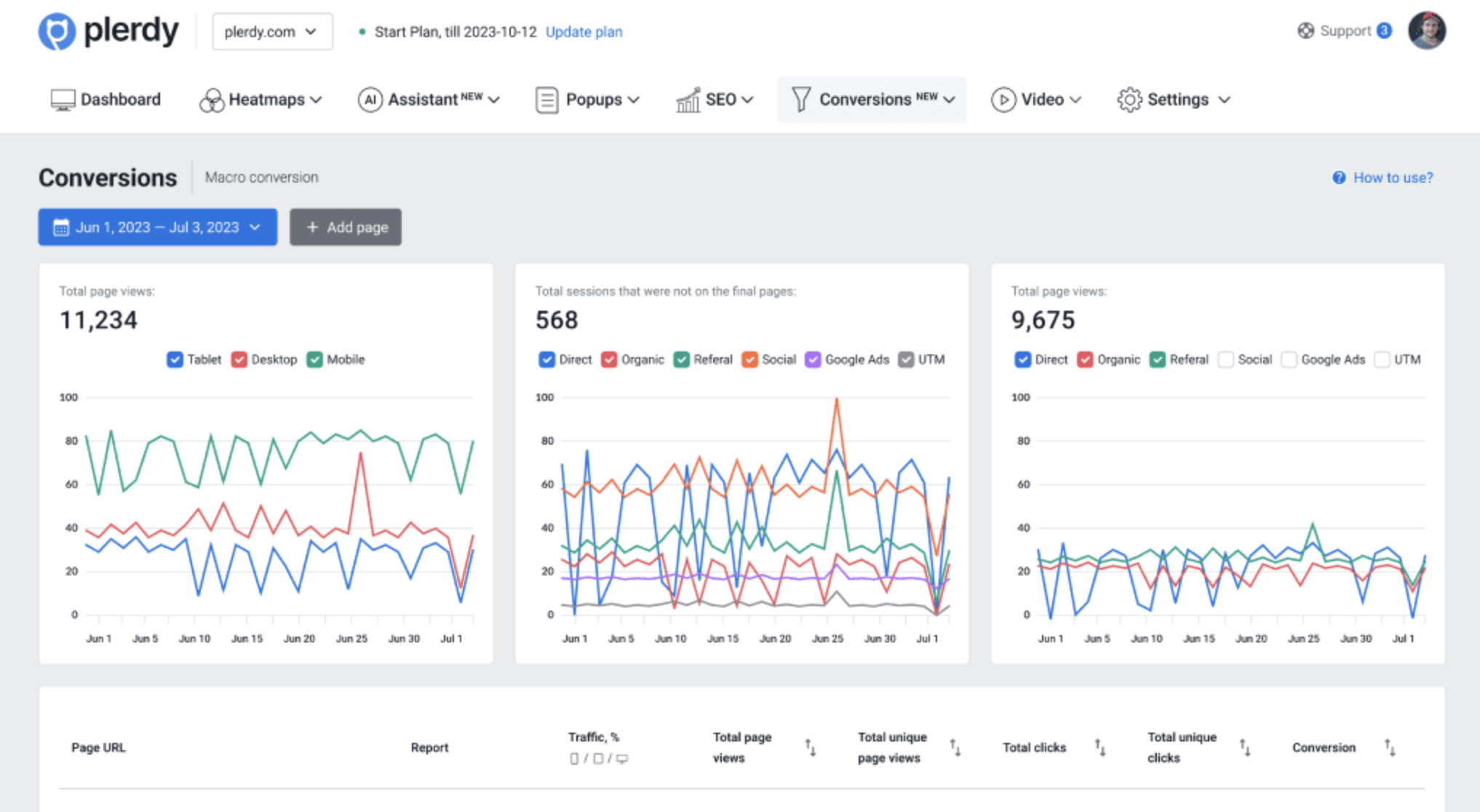
7. Signifyd
Signifyd is an AI platform that acts as an automated fraud investigator for your ecommerce store. For a business owner, it solves the constant, costly headache of chargebacks and manually reviewing suspicious orders. When an order is placed, Signifyd's AI instantly analyses it against thousands of data points to determine if it's legitimate or fraudulent. The key benefit is their financial guarantee: if they approve an order that later turns out to be fraudulent, they cover the cost, effectively removing the financial risk of fraud from your business.
Best for: Ecommerce businesses of all sizes that want to eliminate chargeback losses and automate the order review process.
Best use for eCommerce: Automatically approving legitimate orders to speed up fulfillment, instantly declining high-risk fraudulent orders, and eliminating the financial losses from chargeback fraud.
Basic Price and the highest price: Signifyd's pricing is usage-based.
Alternative tool: ClearSale
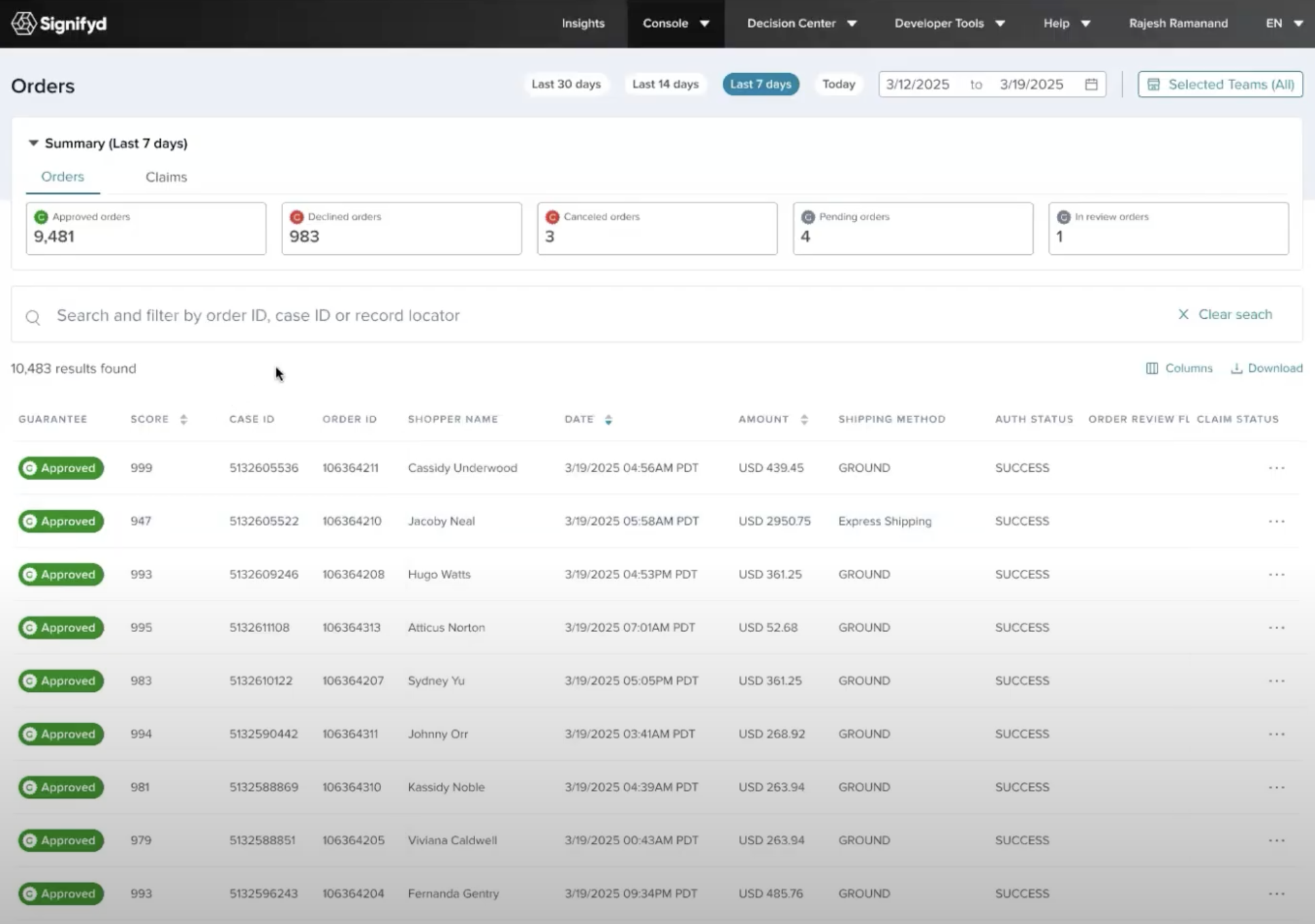
8. SALESmanago
SALESmanago is the foundational AI engine that transforms your customer data into personalised experiences. For a marketing leader, it solves the core problem of having disconnected tools that can only personalise a single touchpoint at a time. SALESmanago acts as a central brain, unifying data from every source—from your on-site search to your returns portal—to build a complete, 360-degree view of each customer.
This rich, unified profile becomes the fuel for its native AI-powered personalisation features. The platform doesn't just store data; it uses it to predict customer behaviour, allowing you to create segments of "customers likely to churn" or "users ready to make their second purchase." It can then deliver truly 1-to-1 experiences, such as personalising the content of your website in real time for each visitor or sending a unique product recommendation to an individual's email. It’s the platform where you execute your entire personalisation strategy, ensuring every customer feels like they are having a unique conversation with your brand.
Best for: Ecommerce leaders who want to move beyond basic personalisation and deliver truly individualised, AI-driven customer journeys across all channels.
Best use for eCommerce: Unifying customer data into a single profile, using predictive AI to identify and act on customer intent, and delivering personalised product recommendations and dynamic content across your website, email, and mobile channels.
Basic Price and the highest price: SALESmanago offers customised plans for mid-market and enterprise businesses.
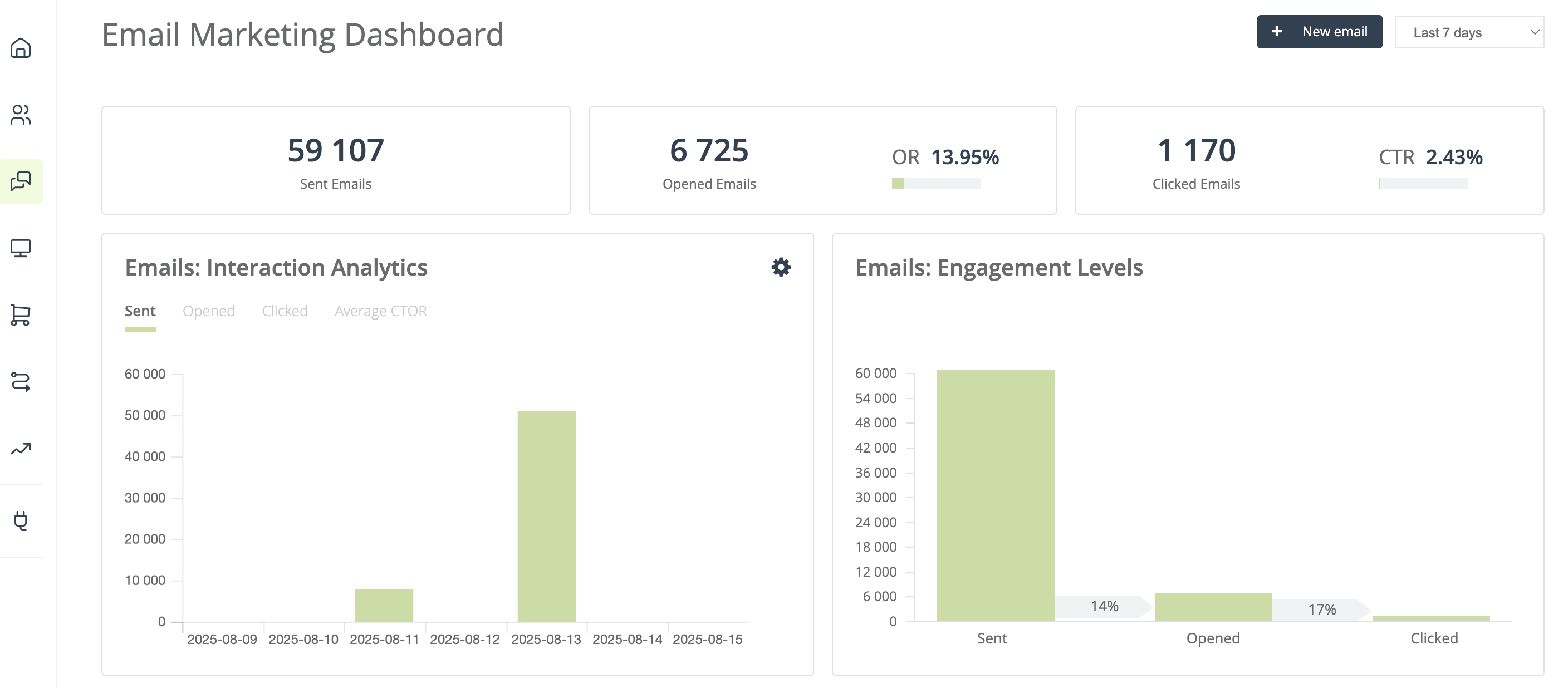
Navigating the Risks of AI in Ecommerce (And How to Mitigate Them)
Adopting AI is not without its pitfalls, and for a business leader, understanding the risks is just as important as seeing the opportunities. While the potential for growth is immense, a poorly considered AI strategy can lead to significant challenges. However, the most common risks are not only predictable but also entirely avoidable with the right approach.
The Risk of Data Privacy and Algorithmic Bias
The most significant concern for any leader is the responsible use of customer data. AI models are only as good as the data they are trained on. If your data is incomplete, biased, or sourced unethically, your AI will amplify those flaws, leading to irrelevant or even discriminatory customer experiences. This "black box" problem, where you're not entirely sure why the AI made a certain decision, can create significant brand and legal risks, particularly under regulations like GDPR.
How to Mitigate It? The solution is to build your AI strategy on a foundation of ethically sourced, fully consented first-party and zero-party data. This is data you own and that your customers have explicitly shared with you. By prioritising transparency and choosing technology partners who build privacy into their platforms by design, you ensure your AI is learning from a clean, trustworthy, and compliant data source.
The Danger of a Disconnected Customer Experience
Ironically, the biggest strategic risk of adopting AI is that a collection of brilliant but separate tools can actually make your customer experience worse.
Imagine a customer uses your new AI-powered site search (like Algolia) and spends five minutes browsing for "men's waterproof hiking boots." That tool now knows their specific intent. But a few hours later, your separate AI marketing tool (like Jasper), which has no access to that search data, sends them a generic email blast about a sale on summer sandals.
This is more than just a missed opportunity; it's a jarring and frustrating experience for the customer. It makes your brand look like it isn't paying attention. This is the inevitable result of the "toolbox" approach, where each AI tool operates in its own data silo, with an incomplete and isolated picture of the customer.
The only way to solve this is to ensure all your AI tools are connected to a central, foundational platform that acts as a single source of truth. This is the role of an AI-powered Customer Data Platform (CDP). By unifying all customer data in one place, you guarantee that every tool—from your search bar to your email engine—is working from the same complete, up-to-date customer profile, enabling a truly seamless and intelligent experience.
Conclusion: Build an Engine, Not Just a Toolbox
The sheer number of AI tools available to ecommerce leaders today is both a huge opportunity and a significant risk. As we've explored, best-in-class tools can revolutionise everything from your on-site search to your fraud prevention. The natural impulse is to collect these powerful solutions, creating a diverse "toolbox" to tackle every challenge.
But the greatest risk in 2026 isn't choosing the wrong tool; it's creating a collection of brilliant tools that don't speak to each other. This is the path to a fragmented customer experience and a frustratingly complex tech stack.
The most successful leaders are making a different choice. They recognise that individual tools are just instruments; what they need is a conductor. They are building their strategy around a foundational AI engine—an AI-powered Customer Data Platform—that unifies their data and orchestrates every activity. This is the strategic path to maximising the ROI of any AI investment and the difference between building a collection of gadgets and building a true engine for growth.
Visual Summary
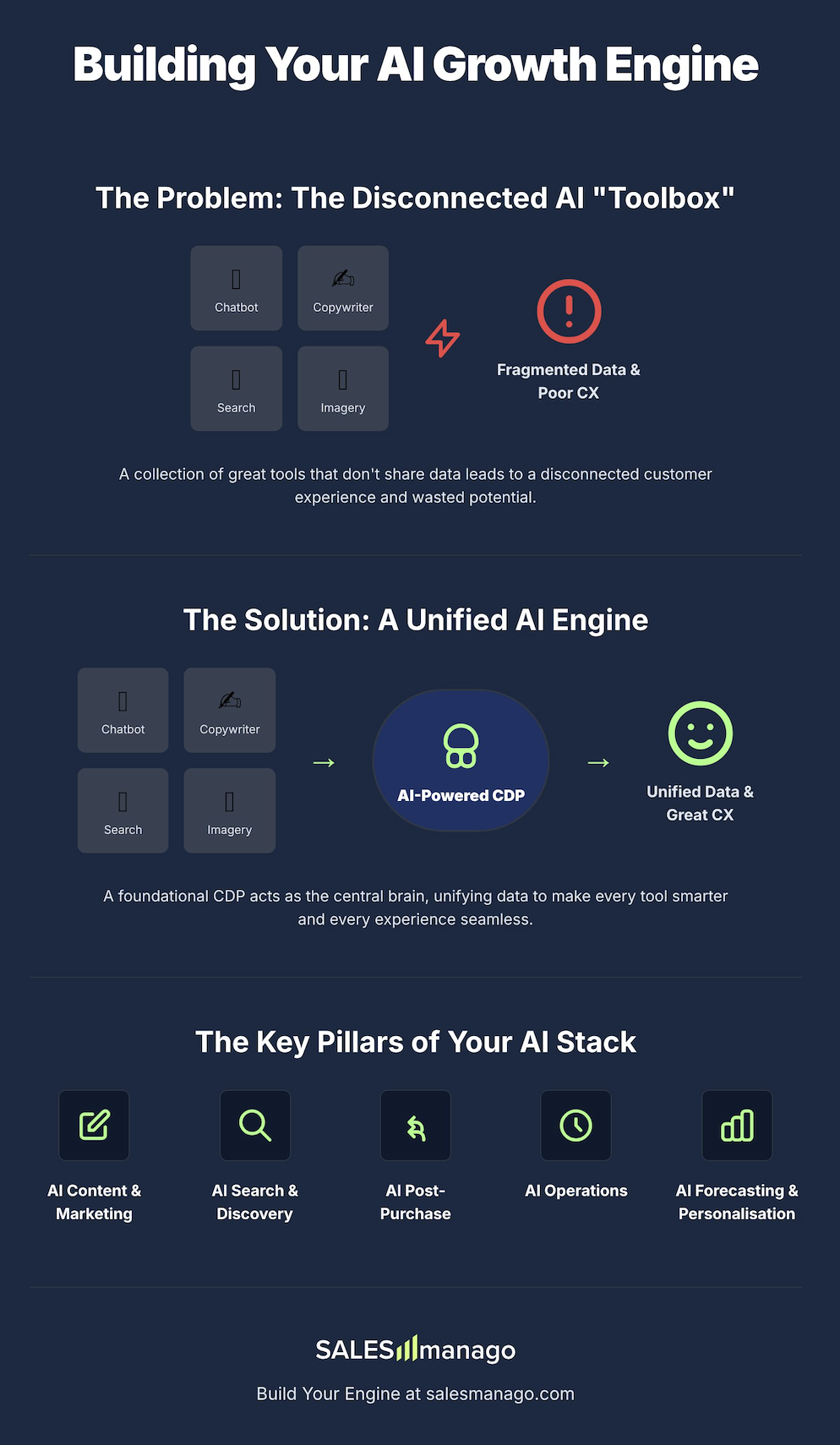
Latest posts

Why MCP is the Key to Unifying the MarTech Stack and Scaling AI
The eCommerce landscape is clear: AI is the future of growth. But this promise is constantly being challenged by a single problem: fragmentation. We must shift from a situation where integrating two systems takes months of engineering work to where complexity is handled by the platform, and we can focus on business execution.
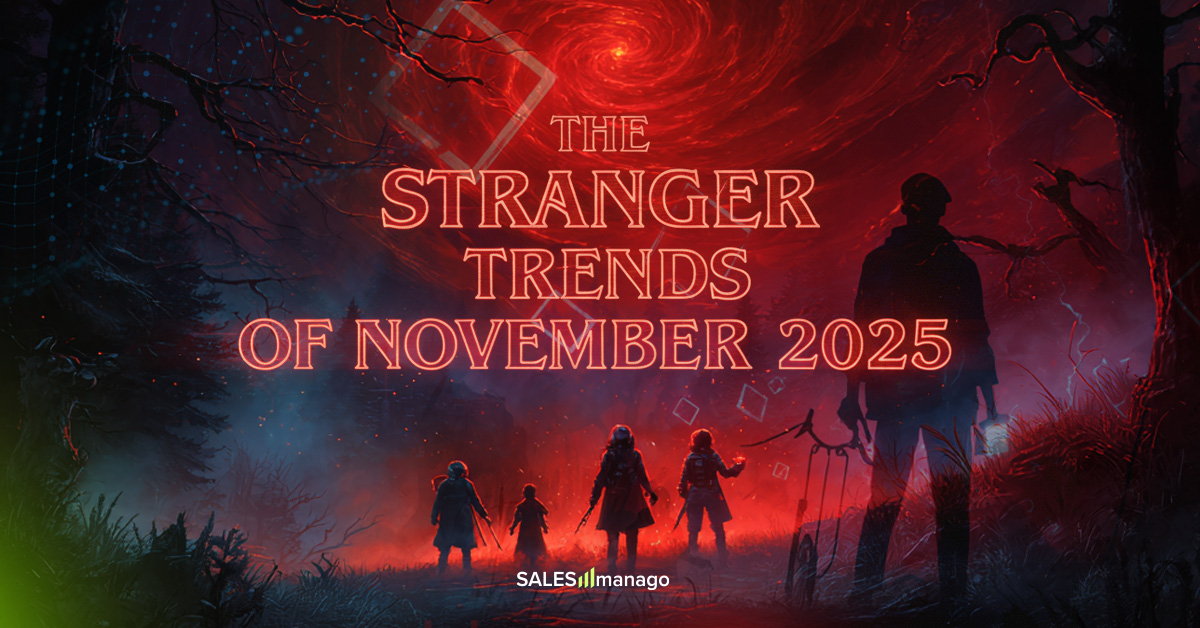
The Stranger Trends of November 2025: A Campaign Guide for the 'Black Time'
Welcome to the table, traveller. Grab your dice and pour a strong cuppa. We are entering the darkest chapter of the 2025 campaign: The Black Time for Promo. The Dungeon Master has set the Difficulty Class to 25, the fog of the "Upside Down" has rolled into the marketplace, and the reliable spells you cast in Q3 are fizzling out.In this session, you a...
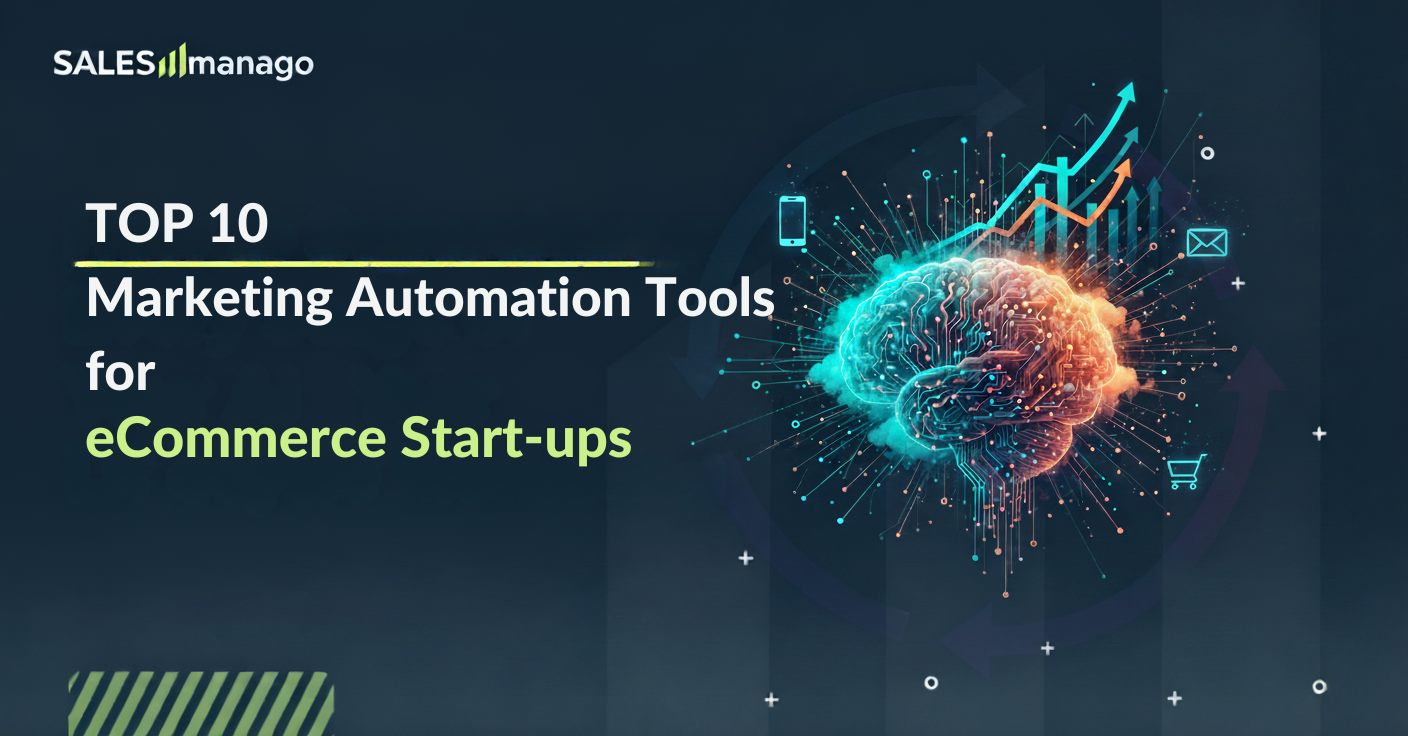
Top 10 Marketing Automation Tools for eCommerce Start-ups for 2026
In 2026, building momentum quickly is everything. For ambitious startups, a modern marketing automation platform is the multiplier. These systems help you send the right message at the right time, reduce repetitive work, and turn leads into customers without burning out your team. We'll explore ten tools that move you beyond basic email to personalised, unified ...
